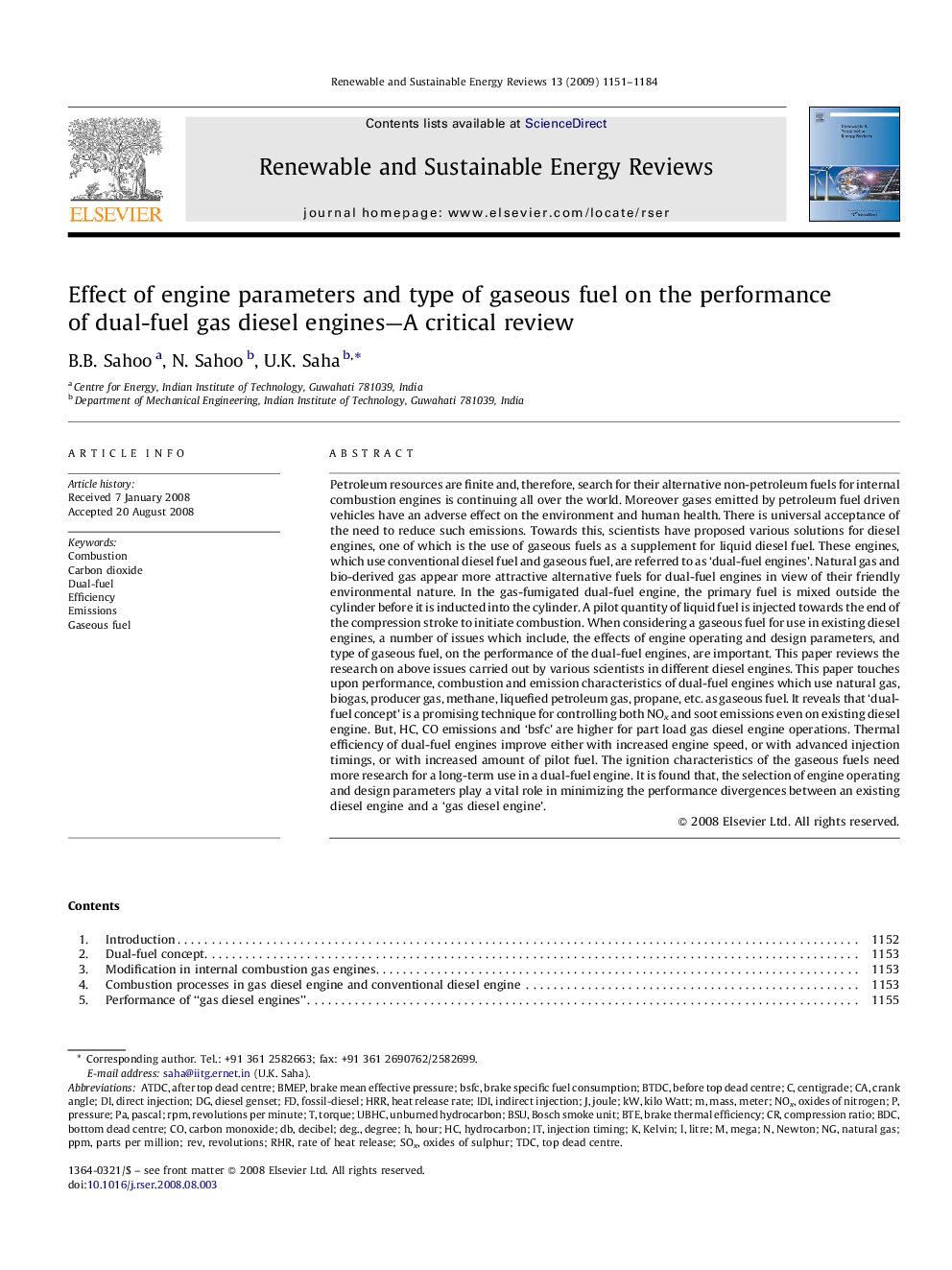| کد مقاله | کد نشریه | سال انتشار | مقاله انگلیسی | نسخه تمام متن |
|---|---|---|---|---|
| 1752104 | 1522369 | 2009 | 34 صفحه PDF | دانلود رایگان |

Petroleum resources are finite and, therefore, search for their alternative non-petroleum fuels for internal combustion engines is continuing all over the world. Moreover gases emitted by petroleum fuel driven vehicles have an adverse effect on the environment and human health. There is universal acceptance of the need to reduce such emissions. Towards this, scientists have proposed various solutions for diesel engines, one of which is the use of gaseous fuels as a supplement for liquid diesel fuel. These engines, which use conventional diesel fuel and gaseous fuel, are referred to as ‘dual-fuel engines’. Natural gas and bio-derived gas appear more attractive alternative fuels for dual-fuel engines in view of their friendly environmental nature. In the gas-fumigated dual-fuel engine, the primary fuel is mixed outside the cylinder before it is inducted into the cylinder. A pilot quantity of liquid fuel is injected towards the end of the compression stroke to initiate combustion. When considering a gaseous fuel for use in existing diesel engines, a number of issues which include, the effects of engine operating and design parameters, and type of gaseous fuel, on the performance of the dual-fuel engines, are important. This paper reviews the research on above issues carried out by various scientists in different diesel engines. This paper touches upon performance, combustion and emission characteristics of dual-fuel engines which use natural gas, biogas, producer gas, methane, liquefied petroleum gas, propane, etc. as gaseous fuel. It reveals that ‘dual-fuel concept’ is a promising technique for controlling both NOx and soot emissions even on existing diesel engine. But, HC, CO emissions and ‘bsfc’ are higher for part load gas diesel engine operations. Thermal efficiency of dual-fuel engines improve either with increased engine speed, or with advanced injection timings, or with increased amount of pilot fuel. The ignition characteristics of the gaseous fuels need more research for a long-term use in a dual-fuel engine. It is found that, the selection of engine operating and design parameters play a vital role in minimizing the performance divergences between an existing diesel engine and a ‘gas diesel engine’.
Journal: Renewable and Sustainable Energy Reviews - Volume 13, Issues 6–7, August–September 2009, Pages 1151–1184